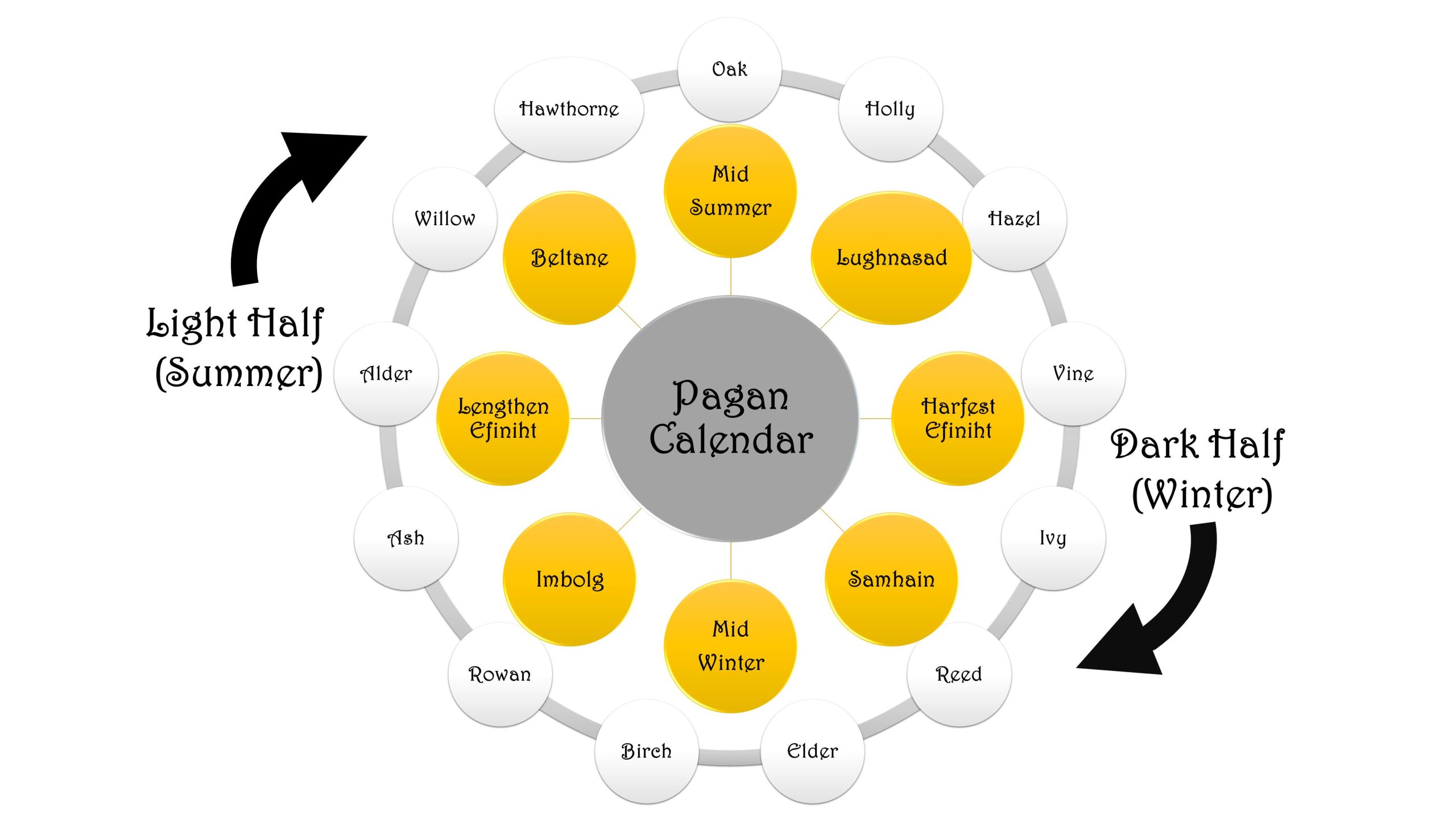For many pagans, the New Year starts at Samhain. This framework merges solar and lunar cycles, dividing into just two seasons, summer and winter. The thirteen months take their names from thirteen of the sacred trees listed in the ogham. Holy days derive from the solar cycle, with the principal Celtic festivals occurring at the mid-points between the solstices and equinoxes. These days are considered auspicious as being part of the time between times.

This modern pagan calendar conflates the holy days from both the Celtic and Germanic traditions with the additions of Midsummer and Yule representing the solstices. The Lengthen Efiniht and Harfest Efiniht are the vernal and autumnal equinoxes, respectively. Although, many pagans refer to the vernal equinox as Ostara and the autumnal equinox as Mabon.
Some of the holy days already have undeniable associations. The most obvious being Lugh/Lughnasad and Belenus/Beltene. Owing to the blending of Celtic and Germanic traditions, the remaining holy days are not so easily assigned. For those of us who prefer venerating Celtic deities, that means that one cannot simply point to archeological evidence and come up with a definitive answer, because no such answer exists for half the sabbats.
After a fair bit of research, reading, and soul searching, I have matched each sabbat with a Celtic deity. These are presented below: Continue reading
